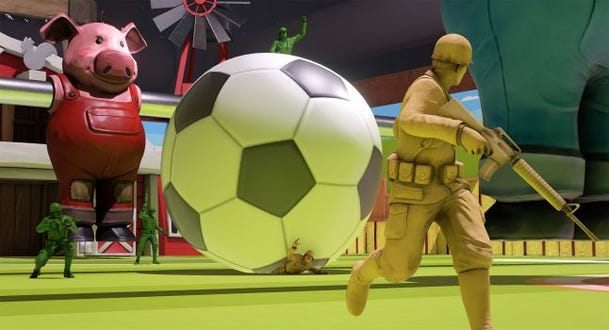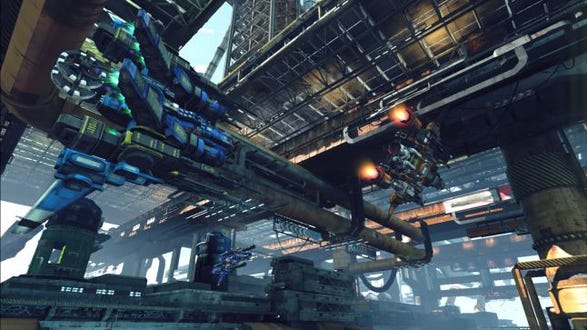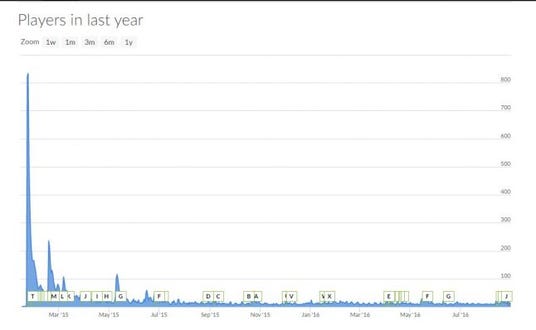Trending
Opinion: How will Project 2025 impact game developers?
The Heritage Foundation's manifesto for the possible next administration could do great harm to many, including large portions of the game development community.
Have you ever wondered that why there are only a few indie online multiplayer games released to the public? Is there any risk when making multiplayer-oriented games with the development scale of indie? If so, what can we do to reduce it? Let's find out.

When talking about indie games, most people will relate the term to games that contain a lengthy campaign, complex puzzles/mechanisms, deep and meaningful story, or just plain simple gameplay for fun. In fact, majority of indie games that developed in recent years are focused on single-player or local multiplayer experiences with those features. On the other hand, online multiplayer are rarely mentioned in the landscape of indies as there are only a few developers making a game of Player-vs-Player experiences, especially in the genre of shooter and action games. As for the player’s perspective, the community base of indie multiplayer is considered to be limited in a relatively small number, while many gamers are even not aware of its existence. Developing online multiplayer games with the indie scale is like taking a huge risk with unpredictable outcome and barely anyone are willing to take part in this challenge. Therefore, my very first blog in Gamasutra will at least try to identify the basic risks of indie online multiplayer games in the industry landscape and solutions to counter those problems.

The Mean Greens (Virtual Basement LLC)
Let’s take a look of some figures that I gathered in the time of writing this blog. These are the peak number of concurrent players in some notable examples from Steam in the last 24 hours.
Verdun 1914-1918: 2,004 players
Squad: 859 players
Running With Rifles: 338 players
Murder Miners: 40 players
The Mean Greens: 13 players
Toxikk: 12 players
Strike Vector: 5 players
Grimoire Manastorm: 4 players
The Flock: 1 player
All of these examples have one thing in common: They’re online multiplayer games made by indie development teams, and most of them have small (if not tiny) unstable player base. With the exception of few games that can hold up to the range of 300-2000 concurrent users (CCU) in long time, or even to the point of outstanding like Rocket League, others will have its CCU dropped sharply to no more than 50 CCUs after a few months since release date, regardless of good or bad ratings. On social media, indie multiplayer can only reach to small specialized groups, while its impact on general gamers is barely visible. There are also frequent sales to improve and expand the community, but made little to no effect on those game.

Strike Vector (Ragequit Corporation)
With these problems ahead, many indie devs have chosen focus more on single-player, rather than risking themselves in multiplayer experiences. But then, does it related to any technical aspects in game development? The answer is: Somehow yes. In common sense, every game genre has its own difficulties when it comes to the design and programming. However, online multiplayer game is generally considered to be “harder” to develop than its counterpart. While single-player only needs gameplay and graphics to expressed its story/idea that satisfy experience of a single person, multiplayer demands stricter technical elements that balanced for broader audiences. Every detail in multiplayer must be placed, calculated and adjusted precisely so that no one can have more strategic advantages than the others. Moreover, its content still needs to satisfy the diversity and replayablity for the sake of game’s lifespan, thus requires demanding time and work in order to balance between player’s experience and price tag. For indie developers with tight budget, manpower and constrained time, this will be an all-out problem.

Squad (Offworld Industries)
Even if the indie developers have overcome the technical aspects of making multiplayer games, they have to face a larger problem: sell and maintain the game. One notable aspect of the multiplayer is that the game must have a considerable community base in order to ensure its overall experience and longevity. Moreover, many games like Strike Vector, Squad, The Mean Greens and The Flock have taken the risk by designing the game to be oriented only in multiplayer and its experiences must be depended on different players. But the main issue here is that indie games are well known for the disadvantage of small community and market size, as well as difficulties when marketing the game. In a time that more and more games are being released, developers have to compete each other desperately in order to gain the attentions from press and gaming community. And even though the game may received rave reviews from experts, only a few people are willing to spend their money to this product as there are uncertainty of player base. Not to mention that the indie multiplayer game itself have to compete against similar games from established AAA companies with large community. Even if the initial sales in first week can be considered as success, that will be the only highest peak the game can get.

Number of Toxikk CCU since the release date (Source: SteamDB)
This also affects the game’s post-release period as its player base rarely can recover to the peak in launch day. Let’s take an example: Toxikk, a first-person shooter with tag line “Frag like it’s 1999”. With solid hardcore gameplay and being considered as the spiritual successor of classics like Unreal Tournament, Toxikk is speculated to attract many gamers that having the nostalgia of Quake-epoch and old-schools. Yet since 22th January 2015, the game’s CCU has dropped dramatically from 833 in launch day to only 227 a month later. As the time of writing this blog, the number of Toxikk concurrent players could only reach up to 12 in the last 24 hours, and its average CCU in the last 30 days only runs around 4.7. As a result, only a few people besides small loyal fans have known and played Toxikk though more than three forth players gave positive reviews, while others still chose to play Unreal Tournament 2004 (57 CCUs in the last 24 hours)

Toxikk (Reakktor Studios)
When reading to these line, many developers and future developers will realize that making an indie multiplayer-oriented game is like facing an even greater risk when comparing to other indie genres. Not only is the game required to be more outstanding than other competitors, but also expected to maintain its original experience by with stable player base. Indie developers also have to spend more resource to make a game that satisfied those criteria, while facing unpredictable outcome due to the market’s nature. However, it doesn’t mean that every indie multiplayer game can be easily flopped, not to mention that there are some outstanding ones with growing player base like Rocket League, Verdun 1914-1918, and Squad. So, what can we do to outcome the risk and make the indie multiplayer games successful? The answer for this question not only lies in the game’s quality, but also in game’s popularity.
For anyone who wants to make a multiplayer-oriented game or intended to do so: Create and grow your community first! Find anyone you think that your game is suitable to their taste and start building the player base. Even though you can put lots of good things and potentials, it will be pointless if no one knows and plays your game. This is even more crucial if the game is designed to have its experience relied on player base. If you can’t guarantee the community, try to make up with more features to the game. One of the easy methods for this situation is to implement AI bots in multiplayer modes. Though it can’t imitate all behaviors of real human, the AI will at least recreate the intended experiences of the game without the requirement of other players. Moreover, that addition feature will greatly increase the game’s overall value and its replayability for the price tag. You can even add full-scale single-player campaign to tell your own story, but it depends on your own resource.
Quick recap: The development of indie online multiplayer games will face the risk of complex design, unstable player base and harsh competitions. In order to solve these problem, developers must make a good game, while identify and grow the suitable gaming audience to ensure the game's longevity.
Thank you very much for reading this very first post in Gamasutra. I hope you can find some solutions in the post and I also apologize if there's any error in the article. Feel free to comment and shout out your opinion. See you later in the next posts!
(All of data and figures source are obtained on SteamCharts.com at 10:00 (GMT+7) 31st August 2016)
Read more about:
BlogsYou May Also Like